Beroepsinstantie kan kennisnemen van nieuwe feitelijke gegevens na BBIE-oppositie
Benelux Gerechtshof 3 februari 2014, A 2013/1/7 (Parfumerie ICI Paris XL tegen Publication France Monde)
 Uitspraak ingezonden door Paul Maeyaert en Jeroen Muyldermans, Altius en Heidi Waem, Dieter Delarue, en Thierry van Innis, Van Innis & Delarue.
Uitspraak ingezonden door Paul Maeyaert en Jeroen Muyldermans, Altius en Heidi Waem, Dieter Delarue, en Thierry van Innis, Van Innis & Delarue.
Prejudiciële vraag gesteld door Hof van Cassatie [IEFbe 660 / FR]. Benelux Gerechtshof verklaart voor recht: Artikel 2.17, eerste lid, BVIE, dient zo te worden uitgelegd dat de daarin vermelde rechterlijke beroepsinstanties kennis kunnen nemen van nieuwe feitelijke gegevens die worden overgelegd in het kader van aanspraken die in dezelfde oppositieprocedure reeds werden geformuleerd voor het BBIE.
6. Het Benelux-Gerechtshof heeft in zijn arrest A 2008/1 [IEFbe 76] geoordeeld dat na een vernietiging van de beslissing van het BBIE er geen reden bestaat om de zaak terug te verwijzen. Het hof van beroep moet zelf uitspraak doen en zijn beslissing de plaats stellen van de vernietigde beslissing, met dien verstande dat het hof van beroep alleen die gegevens in aanmerking kan nemen op grond waarvan de oppositiebeslissing door het BBIE werd genomen of had moeten worden genomen
7. Het hof van beroep beschikt bij de beoordeling van de oppositie over de volle rechtsmacht en is bevoegd om alle geschilpunten zowel in feite als in rechte te beoordelen voor zover deze binnen het kader van de aanspraken vallen die voor het BBIE ter discussie stonden. Overeenkomstig hetgeen voor de weigeringsprocedure is overwogen in punt 12, tweede alinea, van het arrest A 2005/1 [IEF 4293], kan binnen dat kader ook rekening houden met feitelijke gegevens die niet aan het BBIE waren overlegd.
Kosten worden vastgesteld op 1.500 euro
Gestelde vraag:
Moet artikel 2.17, eerste lid, BVIE, in het licht van de arresten A 2005/1 en A 2008/1, zo worden uitgelegd dat de daarin vermelde rechterlijke beroepsinstanties kennis kunnen nemen van nieuwe feitelijke gegevens die worden overgelegd in het kader van aanspraken die in dezelfde oppositieprocedure reeds werden geformuleerd voor het BBIE?
Question posée:
« L'article 2.17, alinéa 1er, de la Convention Benelux en matière de propriété intellectuelle, doit-il, à la lumière des arrêts A 2005/1 et A 2008/1, être interprété en ce sens que les instances judiciaires de recours y mentionnées peuvent prendre connaissance de nouveaux éléments de fait qui sont soumis dans le cadre de prétentions qui ont déjà été formulées dans la même procédure d'opposition devant l'Office Benelux de la propriété intellectuelle ? »
Nederland: Gebruik Kuifje door Herge Genootschap toegestaan
Rechtbank Den Haag 19 februari 2014, ECLI:NL:RBDHA:2014:2028 (Moulinsart tegen Hergé Genootschap)
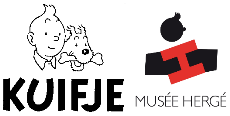 Nederland. Auteursrecht. Merkenrecht. Contractenrecht. Het gebruik van de werken van Hergé – de geestelijk vader van Kuifje – door het Hergé Genootschap in de periode van 2009 tot 2012 is door de rechtbank Den Haag niet verboden. Het Belgische bedrijf Moulinsart, dat om een dergelijk verbod vroeg, heeft onvoldoende aangetoond dat het Hergé Genootschap inbreuk heeft gemaakt op haar auteursrechten door Kuifje-tekeningen in haar eigen publicaties te gebruiken.
Nederland. Auteursrecht. Merkenrecht. Contractenrecht. Het gebruik van de werken van Hergé – de geestelijk vader van Kuifje – door het Hergé Genootschap in de periode van 2009 tot 2012 is door de rechtbank Den Haag niet verboden. Het Belgische bedrijf Moulinsart, dat om een dergelijk verbod vroeg, heeft onvoldoende aangetoond dat het Hergé Genootschap inbreuk heeft gemaakt op haar auteursrechten door Kuifje-tekeningen in haar eigen publicaties te gebruiken.
De rechtbank oordeelt dat er sinds 2000 een overeenkomst tussen Moulinsart en het Hergé Genootschap bestond die nooit is opgezegd en op grond waarvan Moulinsart toestemming voor dergelijk gebruik heeft gegeven. Moulinsart stelde dat opzegging van de overeenkomst niet nodig was, omdat deze in haar ogen niet bestond.
De rechtbank oordeelt verder dat door Moulisart onvoldoende is aangevoerd om te kunnen aannemen dat het Hergé Genootschap met het gebruik van de domeinnaam kuifje.nl inbreuk maakt op een woord/beeldmerk van Moulisart waarin het bestanddeel “Kuifje” is opgenomen.
2.6. Op 24 augustus 2000 is een overeenkomst gesloten tussen Moulinsart en HG waarin is overeengekomen dat Moulinsart aan HG in het kader van de verwezenlijking en de publicatie van het trimestriële tijdschrift Duizend Bommen! en de tweemaandelijkse nieuwsbrief Sapristi!! – onder voorwaarden – het recht verleent om de naam van Hergé en de namen, personages, onderwerpen en tekeningen uit het werk van Hergé te gebruiken. In deze overeenkomst is voorts opgenomen dat Moulinsart gratis aan HG het geheel van grafisch materiaal zal verschaffen (15 afbeeldingen voor de trimestriële publicatie en 2 afbeeldingen voor de nieuwsbrief) dat vereist is voor de reproductie van afbeeldingen. De voorwaarden hebben – onder meer – betrekking op voorafgaande schriftelijke toestemming van Moulinsart voor publicatie, verwijzing naar de oorsprong en de copyright notice bij publicatie en gratis toezending van exemplaren van ieder nummer van Duizend Bommen! Deze overeenkomst is gesloten voor de bepaalde duur van 1 januari 2000 tot en met 30 juni 2001. De overeenkomst bepaalt dat op het einde van deze periode partijen hun samenwerking zullen evalueren ten einde vast te stellen of een verlenging van de overeenkomst opportuun is.
Opzegging
4.14. Gesteld noch gebleken is dat de hiervoor vastgestelde overeenkomst tussen Moulinsart en HG (na het eerste jaar) een bepaalde duur kende. Partijen zijn eenvoudigweg voortgegaan, zodat de rechtbank ervan uitgaat dat sprake is van een overeenkomst voor onbepaalde duur. De rechtbank neemt tot uitgangspunt dat een overeenkomst van onbepaalde duur in beginsel kan worden ontbonden of opgezegd door partijen. Gesteld noch gebleken is echter dat partijen deze overeenkomst hebben ontbonden of opgezegd. Moulinsart is daar zelfs zeer stellig in: zij heeft niet opgezegd omdat er niet hoefde te worden opgezegd aangezien er geen overeenkomst bestond. Dat HG in Moulinsarts houding een opzegging zou hebben gelezen, doet niet af aan het feit dat Moulinsart de overeenkomst niet heeft opgezegd en dat deze derhalve is blijven bestaan tot het moment dat partijen andere afspraken hebben gemaakt, dat wil zeggen: tot het moment dat HG het door Moulinsart voorgelegde charter heeft aanvaard. Het charter is door HG in de loop van 2012 ondertekend, maar zoals partijen ervan uitgaan dat HG het charter per 1 januari 2012 heeft aanvaard, gaat ook de rechtbank daarvan uit.
Tussenconclusie
4.15. Gelet op het voorgaande heeft Moulinsart, tegenover de met producties onderbouwde stelling dat er sinds 2000 een overeenkomst heeft bestaan op grond waarvan HG (onder voorwaarden) toestemming had om gebruik te maken van het oeuvre Hergé bij de publicatie van de HG-publicaties, haar betwisting daarvan onvoldoende onderbouwd. De rechtbank gaat ervan uit dat de rechtsverhouding tussen partijen vanaf 2000 tot 1 januari 2012 is bepaald door de overeenkomst die partijen daarover in 2000 gesloten hebben en die in de loop van de tijd is aangevuld en aangepast (bijvoorbeeld door de e-mailbrieven van 11 mei 2004 en 29 maart 2006). In aansluiting daarop wordt de rechtsverhouding tussen partijen vanaf 1 januari 2012 bepaald door het charter. Zowel in de inmiddels beëindigde overeenkomst als in het charter, hebben partijen afspraken gemaakt over de voorwaarden waaronder Moulinsart aan HG toestemming verleent om (delen van) het oeuvre Hergé te gebruiken in publicaties, zodat – zonder nadere onderbouwing, die ontbreekt – niet valt in te zien dat HG zonder toestemming van Moulinsart gebruik zou hebben gemaakt van de auteursrechten van Moulinsart of door gebruik van het oeuvre Hergé onrechtmatig jegens Moulinsart zou hebben gehandeld. De vorderingen sub 1) tot en met 4) en de daaraan gekoppelde dwangsom zullen daarom worden afgewezen. Daarmee behoeven HG’s overige weren (waaronder haar beroep op een citaatrecht) geen bespreking meer.
Merkinbreuk
4.17. Volgens Moulinsart maakt HG door de domeinnaam kuifje.nl inbreuk op de merkrechten van Moulinsart ex artikel 2.20 lid 1 sub d BVIE. HG gebruikt het merk zonder geldige reden in haar domeinnaam en trekt daarmee ongerechtvaardigd voordeel uit het merk Kuifje. Het is voor HG volstrekt onnodig die domeinnaam kuifje.nl te gebruiken; haar website is immers ook te bereiken via de domeinnaam hergegenootschap.nl. Ook is het HG op basis van het charter verboden de naam Kuifje op te nemen in haar domeinnaam, aldus nog steeds Moulinsart. HG bestrijdt dit.
4.20. Met HG oordeelt de rechtbank dat kuifje.nl geen gebruik inhoudt van het woord/beeldmerk afgebeeld in 2.2.1, althans niet zonder meer. De (visuele, auditieve en begripsmatige) verschillen tussen teken en merk zijn dusdanig groot en in het oog lopend dat zonder nader onderbouwing niet valt in te zien dat sprake is van gebruik (anders dan ter onderscheiding van waren of diensten) van het merk. Of artikel 2.20 lid 1 sub d BVIE ruimte biedt voor bescherming tegen met het merk overeenstemmende tekens en of er sprake is van (al dan niet relevante) overeenstemming, kan hier verder in het midden blijven aangezien Moulinsart daarvoor onvoldoende onderbouwing heeft aangevoerd. Moulinsart heeft evenmin onvoldoende concrete onderbouwing verschaft voor de – door HG bestreden – stelling dat het charter HG verbiedt gebruik te maken van “kuifje” als onderdeel van een domeinnaam. Gelet op het voorgaande zal Moulinsarts vordering met betrekking tot het gebruik van HG’s domeinnaam worden afgewezen.
Lees de uitspraak:
ECLI:NL:RBDHA:2014:2028 (link)
HA ZA 12-1132 (pdf)
Logo is te beschouwen als een onvolledige kopie EF Technics
Voorzitter Rechtbank van Koophandel Gent 29 januari 2014, WK A/13/00171 (BVBA EF Technics tegen BVBA Engels Filip) Ha
Ha ndelsnaamrecht. Merkenrecht. Auteursrechtinbreuk op logo, niet op volledige website. Domeinnamen. Misleidende reclame. BVBA Filip Engels was zaakvoerder van EF Technics. Voordat hij ontslag nam als zaakvoerder, heeft hij de verweerster opgericht. Partijen zijn actief in dezelfde sector en regio. EF Technics vordert succesvol een verbod tot inbreuk van de benamingen "EF Technics", "EF Technix" of "EF Techni" ter aanduiding van handelsactiviteiten, inclusief gebruik als merk, in sociale media, als metatag, als e-mailadres, en als domeinnaam. Tevens vordert EF Technics succesvol elke inbreuk op haar auteursrechten op haar logo en website te verbieden.
ndelsnaamrecht. Merkenrecht. Auteursrechtinbreuk op logo, niet op volledige website. Domeinnamen. Misleidende reclame. BVBA Filip Engels was zaakvoerder van EF Technics. Voordat hij ontslag nam als zaakvoerder, heeft hij de verweerster opgericht. Partijen zijn actief in dezelfde sector en regio. EF Technics vordert succesvol een verbod tot inbreuk van de benamingen "EF Technics", "EF Technix" of "EF Techni" ter aanduiding van handelsactiviteiten, inclusief gebruik als merk, in sociale media, als metatag, als e-mailadres, en als domeinnaam. Tevens vordert EF Technics succesvol elke inbreuk op haar auteursrechten op haar logo en website te verbieden.
De rechtbank oordeelt dat de handelsnamen en logo verwarring zaaien bij het publiek, hetzelfde geldt voor de domeinnaam, waarvoor geen rechtmatig belang geldt. Daarmee maakt verweerster zich ook schuldig aan verwarringstichtende en misleidende reclame. Wat betreft inbreuk op de auteursrechten, oordeelt de rechtbank dat het logo is te beschouwen als een onvolledige kopie van het werk zonder dat een eigen originele prestatie kan worden aangetoond. Het gaat te ver die bescherming uit te breiden naar de volledige website van eiseres, die niet voldoende origineel is. Op dat punt is de vordering ongegrond. Alle overige vorderingen worden toegewezen.
[..] De gestileerde letters in rood en zwart "EF" [..] zijn het meest kenmerkende element van het logo en werden overanderd overgenomen. Dat het hierbij om de initialen van de zaakvoerder van de verweerster gaat is geen punt. Uiteraard mag deze zijn naam verder gebruiken in het handelsverkeer, alleen niet op een manier die verwarring zaait bij het publiek in het nadeel van de eiseres.
Wat de handelsnaam betreft kan de verweerster bezwaarlijk volhouden dat de naam "EF-Technix" niet verwarrend zou zijn met de naam "EF-Technics" binnen dezelfde producten - en geografische markt.
De verweerster dient het gebruik hiervan te stoppen.
Hetzelfde geldt dan uiteraard voor de domeinnaam www.EF-Technix.be en het gebruik van deze handelsnaam als metatag. De verweerster kan hiervoor geen rechtmatig laten gelden en beoogt integendeel cliënteel van de eiseres af te werven door verwarring te zaaien.
Door de hierboven geschetste handelingen maakt de verweerster zich bovendien schuldig aan verwarringstichtende en misleidende reclame [..].
[..]
Wat de beweerde inbreuk op de auteursrechten van de eiseres betreft stellen Wij vooreerst vast dat het logo van de eiseres de vrucht is van een afdoende intellectuele en creatieve prestatie en voldoende origineel is om van besherming te kunnen genieten. Het gaat niet om loutere initialen in een bepaalde kleur maar om een gestileerd geheel waarbij kleuren en vormen (letters, helm) op een creatieve manier worden verweven.
De volgende vraag is of het nieuwe logo van de verweerster te aanzien is als een inbreuk op de auteursrechten van de eiseres. Dit is inderdaad het geval. [..] Het geheel is te beschouwen als een onvolledige kopie van het werk van de eiseres zonder dat een eigen originele prestatie kan worden aangetoond.
[..] Behalve het logo [..] bevat de website geen originele elementen die de bescherming ervan rechtvaardigen. [..]
Lees hier de uitspraak:
WK A/13/00171 (pdf)
Opnieuw verhoging van de bewijslast IE-inbreuk bij goederen in transit
Rechtbank van Eerste Aanleg Antwerpen 14 februari 2014, AR 02/7600/A (Koninklijke Philips Electronics tegen Lucheng Meijing) Uitspraak ingezonden door Carina Gommers en Carl De Meyer, Hoyng Monegier.
Uitspraak ingezonden door Carina Gommers en Carl De Meyer, Hoyng Monegier.
Zie eerder IEFbe64 en IEF 10604 (HvJ EU). Vervaardigingsfictie. Douanerecht. Geen bewijs van verhandeling of reclame in de EU. Eiseres is houdster van internationale modelinschrijvingen voor elektrische scheerapparaten en beroept zich tevens op auteursrechten. De Antwerpse Douane houdt een lading verdachte scheerapparaten tegen. Eiseres voerde de vervaardigingsfictie aan, echter verweerster gaf aan dat goederen niet kunnen worden vastgehouden en gekwalificeerd als goederen die inbreuk maken wanneer niet is bewezen dat zij in de Unie zullen worden verhandeld. Tussentijds gestelde prejudiciële vragen zijn door het HvJ EU [IEF 10604] beantwoord. Nu de rechter de bewijselementen, zoals aangeduid door het HvJ EU, ook afwijst, kan eiseres in deze procedure geen sluitend bewijs van inbreuk leveren.
Het HvJ EU [IEF 10604] verduidelijkt onder welke voorwaarden de douaneautoriteiten van de lidstaten uit derde landen afkomstige goederen – imitaties of kopieën van in de Unie intellectuele-eigendomsrechtelijk beschermde waren – kunnen vasthouden.
Eiseres kan zich niet langer beroepen op de ingeroepen vervaardigingsfictie en dient voor een inbreuk op haar rechten te bewijzen dat de bewuste scheerapparaten bestemd zijn voor verhandeling in de EU. Er is niet middels sluitend bewijs aangetoond dat de goederen aan een klant in een EU-lidstaat zijn verkocht of dat een verkoopaanbieding is gedaan of reclame is gemaakt.
De zogenaamde eurostekker, CE-markering, gebruikte talen (Engels, Frans, Duits en Spaans) geven evenmin uitsluitsel over de voorgenomen bestemming van de goederen.
De hoofdvordering wordt ongegrond verklaard. De tegenvordering van de tweede verweerster wordt gegrond verklaard, zodat een bedrag van €21.353,70 dient te worden betaald.
Veroordeling bij verstek voor merkinbreuk middels domeinnaam
Voorzitter Rechtbank van Koophandel Kortrijk 6 januari 2014, 3360/2013 (Boing tegen Zizo Impex SRL)
3. Beoordeling
Aan de hand van voorgelegde stukken en gegeven uitleg komt de vordering van de eiseres als gegrond over. Wij leggen de verweerster bevel op de betrokken domeinnaam door te halen of te laten doorhalen, onder verbeurte van een dwangsom (...).
(...) De eiseres toont aan dat de verweerster is overgegaan tot het wederrechtelijk registreren van de domeinnaam "Www.zizo-inflatables-factory.com", met name dat de verweerster zonder recht of legitiem belang jegens die domeinnaam [..] met het doel de eiseres te schaden of ongerechtvaardigd voordeel te halen, die domeinnaam heeft laten registreren, en dat deze identiek is aan het merk "ZIZO Inflatables", in elk geval er zodanig mee overeenstemt dat het verwarring kan scheppen met dat merk, door de eisers geregistreerd bij het Benelux-Bureau voor de intellectuele eigendom (art. 4 tweede lid van de wet van 26 juni 2003 betreffende het wederrechtelijk registreren van domeinnamen).
Lees hier de uitspraak:
3360/2013 (pdf)
HvJ EU: België komt Verordening biometrische paspoorten niet na
HvJ EU 13 februari 2014, zaak C-139/13 (Commissie tegen België) - dossier
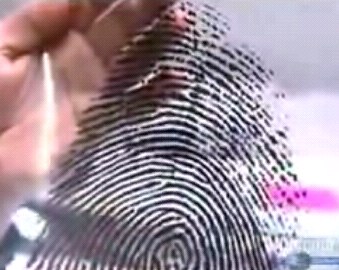
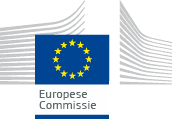 Biometrische paspoort. ICT. Niet-nakoming. Schending van artikel 6 van verordening (EG) nr. 2252/2004 "biometrische paspoorten". De Commissie verzoekt het hof vast te stellen dat België de op haar rustende verplichtingen niet is nagekomen door niet binnen de gestelde termijn biometrische paspoorten af te geven op grond van artikel 6 van de Verordening. België betwist de inbreuk niet. Het hof volstaat dan ook met de vaststelling dat de lidstaat zich aan het einde van de gestelde termijn bevond, derhalve haar verplichtingen heeft geschonden.
Biometrische paspoort. ICT. Niet-nakoming. Schending van artikel 6 van verordening (EG) nr. 2252/2004 "biometrische paspoorten". De Commissie verzoekt het hof vast te stellen dat België de op haar rustende verplichtingen niet is nagekomen door niet binnen de gestelde termijn biometrische paspoorten af te geven op grond van artikel 6 van de Verordening. België betwist de inbreuk niet. Het hof volstaat dan ook met de vaststelling dat de lidstaat zich aan het einde van de gestelde termijn bevond, derhalve haar verplichtingen heeft geschonden.
11. Le Royaume de Belgique ne conteste pas le manquement reproché.
12. Il suffit de rappeler, à cet égard, que, selon une jurisprudence constante, l’existence d’un manquement doit être appréciée en fonction de la situation de l’État membre telle qu’elle se présentait au terme du délai fixé dans l’avis motivé (voir, notamment, arrêt du 19 mai 2009, Commission/Irlande, C-532/08, point 9).
13. Or, il est constant que, à l’expiration du délai imparti dans l’avis motivé, le Royaume de Belgique n’avait pas mis en œuvre les spécifications techniques relatives à l’émission de passeports biométriques contenant les empreintes digitales.
14. Dès lors, il convient de considérer le recours de la Commission comme fondé.
15. Par conséquent, il y a lieu de constater que, en n’ayant pas mis en œuvre, dans le délai prescrit, les spécifications techniques relatives à l’émission de passeports biométriques contenant les empreintes digitales, le Royaume de Belgique a manqué aux obligations qui lui incombent en vertu de l’article 6 du règlement.
HvJ EU: Gedistribueerde afbeeldingen kunnen ter kennis gekomen zijn van ingewijden
HvJ EU 13 februari 2014, zaak C-479/12 (Gautzsch Großhandel) - dossier
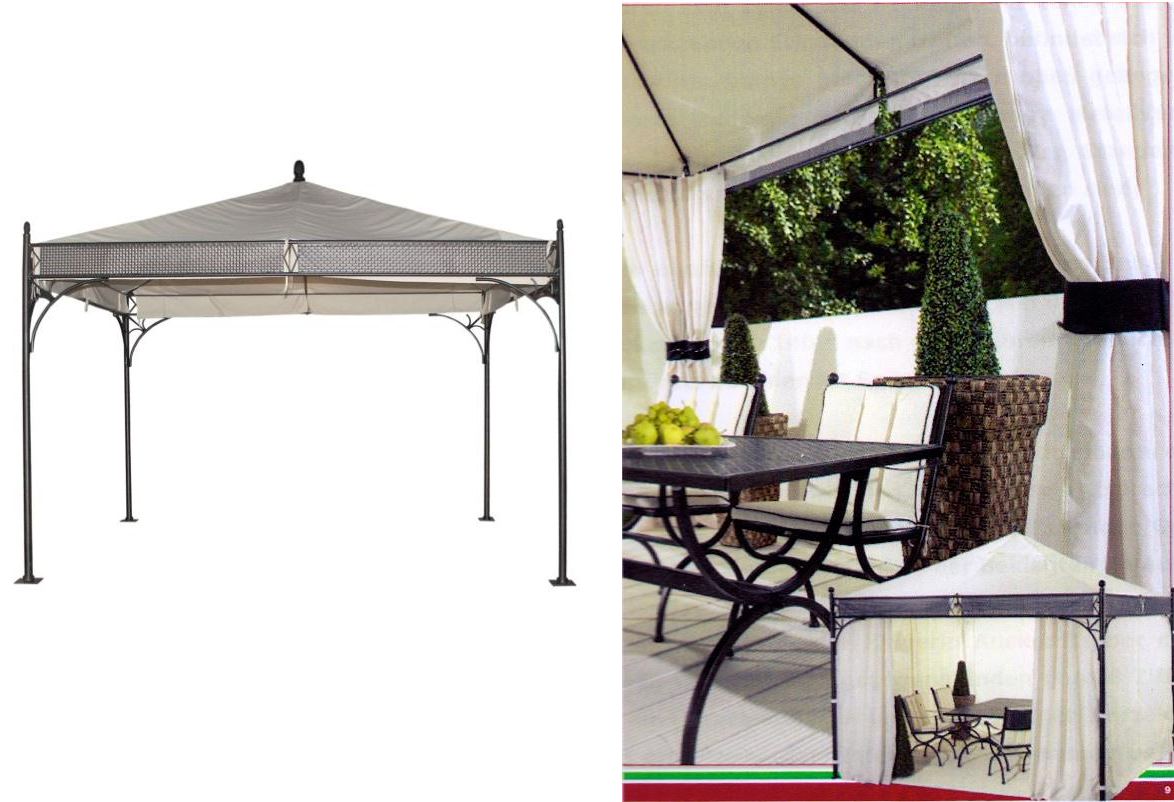 Zie eerder IEF 12084 en IEF 13011. Verzoek om een prejudiciële beslissing, Bundesgerichtshof. Gemeenschapsmodellenrecht. Uitlegging van artikel 7, lid 1, eerste zin, artikel 11, lid 2, artikel 19, lid 2, en artikel 89, lid 1, sub a en d, van Gemeenschapsmodellenverordening. Begrip „beschikbaarstelling voor het publiek”. Bewijslast inzake het namaken van een niet-ingeschreven model – Tentoonstelling van het model in een tentoonstellingsruimte die buiten het gebruikelijke waarnemingsveld van de analisten van de betrokken markt is gelegen en bekendmaking ervan, zonder voorwaarde van geheimhouding, aan onderneming die werkzaam is in de betrokken sector. Termijn van verjaring van recht om aan iedere derde gebruik van model te verbieden. Rechtsverwerking. Vaststelling van het recht dat moet worden toegepast op geschillen betreffende handelingen die inbreuk maken op gemeenschapsmodellen en op vorderingen tot vernietiging van nagemaakte goederen.
Zie eerder IEF 12084 en IEF 13011. Verzoek om een prejudiciële beslissing, Bundesgerichtshof. Gemeenschapsmodellenrecht. Uitlegging van artikel 7, lid 1, eerste zin, artikel 11, lid 2, artikel 19, lid 2, en artikel 89, lid 1, sub a en d, van Gemeenschapsmodellenverordening. Begrip „beschikbaarstelling voor het publiek”. Bewijslast inzake het namaken van een niet-ingeschreven model – Tentoonstelling van het model in een tentoonstellingsruimte die buiten het gebruikelijke waarnemingsveld van de analisten van de betrokken markt is gelegen en bekendmaking ervan, zonder voorwaarde van geheimhouding, aan onderneming die werkzaam is in de betrokken sector. Termijn van verjaring van recht om aan iedere derde gebruik van model te verbieden. Rechtsverwerking. Vaststelling van het recht dat moet worden toegepast op geschillen betreffende handelingen die inbreuk maken op gemeenschapsmodellen en op vorderingen tot vernietiging van nagemaakte goederen.
Het HvJ EU verklaart voor recht:
1) Artikel 11, lid 2, van [gemeenschapsmodellenverordening] moet aldus worden uitgelegd dat kan worden geoordeeld dat een niet-ingeschreven model bij een normale gang van zaken redelijkerwijs ter kennis kon zijn gekomen van ingewijden in de betrokken sector die in de Europese Unie werkzaam zijn, wanneer afbeeldingen van dit model zijn gedistribueerd aan handelaars die actief zijn in deze sector, waarbij het aan de rechtbank voor het gemeenschapsmodel staat om dit laatste te beoordelen op basis van de omstandigheden van de bij haar aanhangige zaak.
2) Artikel 7, lid 1, eerste zin, van verordening nr. 6/2002 moet aldus worden uitgelegd dat kan worden geoordeeld dat een niet-ingeschreven model, hoewel het zonder een uitdrukkelijke of stilzwijgende voorwaarde van geheimhouding aan derden is bekendgemaakt, bij een normale gang van zaken niet redelijkerwijs ter kennis kon zijn gekomen van ingewijden in de betrokken sector die in de Europese Unie werkzaam zijn, wanneer het slechts voor één enkele onderneming beschikbaar is gesteld of louter is voorgesteld in de tentoonstellingsruimten van een onderneming die buiten het grondgebied van de Unie is gevestigd, waarbij het aan de rechtbank voor het gemeenschapsmodel staat om dit laatste te beoordelen, rekening houdend met de omstandigheden van de bij haar aanhangige zaak.
3) Artikel 19, lid 2, eerste alinea, van verordening nr. 6/2002 moet aldus worden uitgelegd dat het aan de houder van het beschermde model staat om het bewijs te leveren dat het aangevochten gebruik voortvloeit uit het namaken van dit model. Indien de rechtbank voor het gemeenschapsmodel echter vaststelt dat het feit dat de bewijslast op deze houder van het beschermde model rust, het onmogelijk of uiterst moeilijk kan maken om dit bewijs te leveren, dient zij, teneinde de eerbiediging van het doeltreffendheidsbeginsel te verzekeren, gebruik te maken van alle procedurele middelen die haar door het nationale recht ter beschikking worden gesteld om die moeilijkheid te ondervangen, daaronder begrepen een eventuele toepassing van de regels van het nationale recht die de bewijslast aanpassen of minder zwaar maken.
4) De verjaring en het verval van recht die als verweermiddel aan de krachtens de artikelen 19, lid 2, en 89, lid 1, sub a, van verordening nr. 6/2002 ingestelde vordering kunnen worden tegengeworpen, vallen onder het nationale recht, dat met eerbiediging van de beginselen van gelijkwaardigheid en doeltreffendheid moet worden toegepast.
5) Artikel 89, lid 1, sub d, van verordening nr. 6/2002 moet aldus worden uitgelegd dat de vorderingen tot vernietiging van de inbreukmakende voortbrengselen worden geregeld door het recht, met inbegrip van het internationaal privaatrecht, van de lidstaat waar de handelingen die inbreuk maken of dreigen te maken, zijn verricht. De vorderingen strekkende tot vergoeding van de schade die is voortgevloeid uit de activiteiten van degene die deze handelingen heeft gesteld en strekkende tot verkrijging van informatie over deze activiteiten teneinde die schade te kunnen bepalen, vallen overeenkomstig artikel 88, lid 2, van verordening nr. 6/2002 onder het nationale recht, met inbegrip van het internationaal privaatrecht, van de rechtbank voor het gemeenschapsmodel waarbij de zaak is ingeleid.
Gestelde prejudiciële vragen:
1. Moet artikel 11, lid 2, van verordening nr. 6/2002 aldus worden uitgelegd dat een model bij een normale gang van zaken redelijkerwijs ter kennis kan zijn gekomen van ingewijden in de betrokken sector die in de Unie werkzaam zijn, wanneer afbeeldingen ervan aan handelaars zijn gedistribueerd?
2. Moet artikel 7, lid 1, eerste zin, van verordening nr. 6/2002 aldus worden uitgelegd dat een model, hoewel het zonder een uitdrukkelijke of stilzwijgende voorwaarde van geheimhouding aan derden is bekendgemaakt, bij een normale gang van zaken niet redelijkerwijs ter kennis kan zijn gekomen van ingewijden in de betrokken sector die in de Unie werkzaam zijn, wanneer
a) het enkel voor bepaalde ondernemingen van de betrokken sector beschikbaar is gesteld, of
b) het is tentoongesteld in een tentoonstellingsruimte van een onderneming in China die buiten het gebruikelijke waarnemingsveld van de analisten van de betrokken markt is gelegen?
3. a) Moet artikel 19, lid 2, van verordening 6/2002 aldus worden uitgelegd dat de houder van een niet-ingeschreven gemeenschapsmodel het bewijs moet leveren dat het aangevochten gebruik voortvloeit uit het namaken van het beschermde model?
b) Indien de derde vraag, sub a, bevestigend wordt beantwoord:
Wordt de bewijslast omgekeerd of kan de houder van een niet-ingeschreven gemeenschapsmodel aanspraak maken op een lichtere bewijslast, wanneer het model en het aangevochten gebruik ervan in grote mate overeenstemmen?
4. a) Kan het recht om volgens artikel 19, lid 2, juncto artikel 89, lid 1, sub a, van verordening 6/2002 een verbodsvordering in te stellen op grond dat inbreuk op een niet-ingeschreven gemeenschapsmodel is gemaakt, verjaren?
b) Indien de vierde vraag, sub a, bevestigend wordt beantwoord: Wordt deze verjaring geregeld door het Unierecht, en zo ja, door welke bepaling?
5. a) Kan met betrekking tot het recht om volgens artikel 19, lid 2, juncto artikel 89, lid 1, sub a, van verordening 6/2002 een verbodsvordering in te stellen op grond dat inbreuk op een niet-ingeschreven gemeenschapsmodel is gemaakt, sprake zijn van rechtsverwerking?
b) Indien de vijfde vraag, sub a, bevestigend wordt beantwoord: Wordt deze rechtsverwerking geregeld door het Unierecht, en zo ja, door welke bepaling?
6. Moet artikel 89, lid 1, sub d, van verordening 6/2002 aldus worden uitgelegd dat op vorderingen tot vernietiging [van nagemaakte goederen], informatieverstrekking en schadevergoeding die wegens inbreuk op een niet-ingeschreven gemeenschapsmodel voor de volledige Unie worden ingesteld, het recht dient te worden toegepast van de lidstaat waar de inbreukmakende handelingen zijn verricht?
HvJ EU Svensson: Hyperlinken naar beschermde werken kan zonder toestemming
HvJ EU 13 februari 2014, zaak C-466/12 (Svensson e.a. tegen Retriever) - dossier - persbericht
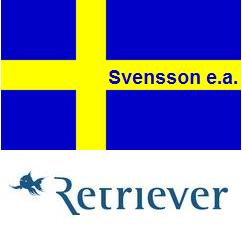 Prejudiciële vragen gesteld door Svea hovrätt, Zweden. Veel besproken hier, zie IEF 12057 voor een introductie: Auteursrecht. Hyperlink-vragen. Mededeling aan een nieuw publiek wanneer een aanklikbare link wordt geplaatst. Relevantie van de openbaarheid van de locatie of beperkingen op toegang.
Prejudiciële vragen gesteld door Svea hovrätt, Zweden. Veel besproken hier, zie IEF 12057 voor een introductie: Auteursrecht. Hyperlink-vragen. Mededeling aan een nieuw publiek wanneer een aanklikbare link wordt geplaatst. Relevantie van de openbaarheid van de locatie of beperkingen op toegang.
Uit het persbericht: De eigenaar van een website kan, zonder toestemming van de houders van het auteursrecht, via hyperlinks doorverwijzen naar beschermde werken die op een andere website vrij beschikbaar zijn. Dit geldt zelfs wanneer bij de internetgebruikers die op de link klikken, de indruk wordt gewekt dat het werk wordt getoond op de website waar de link zich bevindt. (...)
In het vandaag gewezen arrest oordeelt het Hof dat het plaatsen van aanklikbare links naar beschermde werken een handeling bestaande in een mededeling vormt. Er is immers sprake van een dergelijke handeling wanneer een werk op zodanige wijze voor het publiek beschikbaar wordt gesteld dat het voor dit publiek toegankelijk is (ook al maakt het geen gebruik van die mogelijkheid). Bovendien kunnen de potentiële gebruikers van de door Retriever Sverige geëxploiteerde website worden aangemerkt als een publiek, daar het gaat om een onbepaald en vrij groot aantal gebruikers.
Het Hof herinnert evenwel eraan dat de mededeling gericht moet zijn tot een nieuw publiek, dit wil zeggen een publiek dat door de houders van het auteursrecht niet in aanmerking werd genomen toen zij toestemming verleenden voor de oorspronkelijke mededeling. Volgens het Hof is er geen sprake van een dergelijk „nieuw publiek” in het geval van de door Retriever Sverige geëxploiteerde website. Aangezien de op de website van Göteborgs-Posten aangeboden werken vrij toegankelijk waren, moeten de gebruikers van de website van Retriever Sverige worden beschouwd als een onderdeel van het publiek dat door de journalisten reeds in aanmerking werd genomen toen zij toestemming verleenden voor de publicatie van de artikelen op Göteborgs-Posten. Aan deze vaststelling wordt niet afgedaan door het feit dat bij de internetgebruikers die op de link klikken de indruk wordt gewekt dat het werk wordt getoond op de website van Retriever Sverige, terwijl dit werk in werkelijkheid afkomstig is van Göteborgs-Posten.
Het Hof concludeert daaruit dat de eigenaar van een website, zoals die van Retriever Sverige, zonder toestemming van de houders van het auteursrecht via hyperlinks kan doorverwijzen naar beschermde werken die op een andere website vrij beschikbaar zijn.
Dit zou evenwel niet het geval zijn indien een hyperlink de gebruikers van de website waarop deze link zich bevindt, in staat stelt om beperkingsmaatregelen te omzeilen die op de website waar het beschermde werk zich bevindt zijn getroffen teneinde de toegang van het publiek te beperken tot de abonnees ervan, omdat in dit geval die gebruikers door de houders van het auteursrecht niet in aanmerking werden genomen als potentieel publiek toen zij toestemming verleenden voor de oorspronkelijke mededeling.
Ten slotte verklaart het Hof dat de lidstaten niet het recht hebben om de houders van een auteursrecht een ruimere bescherming te bieden door een uitbreiding van het begrip „mededeling aan het publiek”. Dit zou immers verschillen op het gebied van de wetgeving doen ontstaan en dus leiden tot rechtsonzekerheid, terwijl de betrokken richtlijn juist beoogt deze problemen te verhelpen.
Gestelde vragen:
1. Is sprake van mededeling aan het publiek in de zin van artikel 3, lid 1, van richtlijn 2001/29/EG van het Europees Parlement en de Raad van 22 mei 2001 betreffende de harmonisatie van bepaalde aspecten van het auteursrecht en de naburige rechten in de informatiemaatschappij, wanneer iemand anders dan de houder van het auteursrecht op een bepaald werk, op zijn website een aanklikbare link plaatst naar het werk?
2. Is het voor het antwoord op de eerste vraag relevant of het werk waarnaar de link verwijst, is geplaatst op een website op het internet waartoe iedereen zonder beperkingen toegang heeft dan wel of de toegang op enige wijze is beperkt?
3. Moet bij de beantwoording van de eerste vraag onderscheid worden gemaakt tussen gevallen waarin het werk, nadat de gebruiker op de link heeft geklikt, wordt getoond op een andere website, en gevallen waarin het werk, nadat de gebruiker op de link heeft geklikt, aldus wordt getoond dat de indruk wordt gewekt dat het op dezelfde website verschijnt?
4. Kan een lidstaat een ruimere bescherming bieden aan het uitsluitende recht van auteurs door onder het begrip "mededeling aan het publiek" een groter aantal handelingen te verstaan dan die welke zijn genoemd in artikel 3, lid 1, van richtlijn 2001/29?
Het HvJ EU verklaart voor recht:
1) Artikel 3, lid 1, van richtlijn 2001/29/EG van het Europees Parlement en de Raad van 22 mei 2001 betreffende de harmonisatie van bepaalde aspecten van het auteursrecht en de naburige rechten in de informatiemaatschappij moet aldus worden uitgelegd dat het plaatsen op een website van aanklikbare links naar werken die op een andere website vrij beschikbaar zijn, geen handeling bestaande in een mededeling aan het publiek vormt.
2) Artikel 3, lid 1, van richtlijn 2001/29 moet aldus worden uitgelegd dat het eraan in de weg staat dat een lidstaat een ruimere bescherming kan bieden aan de houders van een auteursrecht door te bepalen dat het begrip mededeling aan het publiek een groter aantal handelingen omvat dan die waarop deze bepaling betrekking heeft.
Conclusie A-G: Beschermstof kan product zijn in de zin van de ABC-Verordening
Conclusie A-G HvJ EU 13 februari 2014, zaak C-11/13 (Bayer CropScience) - dossier
 Verzoek om een prejudiciële beslissing, Bundespatentgericht. Zie IEF 12410 ter introductie. Octrooirecht. ABC. Uitlegging van de begrippen "product" en "werkzame stof" in de artikelen 1, punten 3 en 8, alsook 3, lid 1, van ABC-verordening. Isoxadifen eventueel daaronder begrepen. Verzoekster is houdster van een EP 0 719 261B1 voor een ‘gesubstitueerde isoxazoline’.
Verzoek om een prejudiciële beslissing, Bundespatentgericht. Zie IEF 12410 ter introductie. Octrooirecht. ABC. Uitlegging van de begrippen "product" en "werkzame stof" in de artikelen 1, punten 3 en 8, alsook 3, lid 1, van ABC-verordening. Isoxadifen eventueel daaronder begrepen. Verzoekster is houdster van een EP 0 719 261B1 voor een ‘gesubstitueerde isoxazoline’.
Conclusie A-G:
Het begrip ,product’ in artikel 3, lid 1, en in artikel 1, punt 8, van [de ABC-verordening], en het begrip „werkzame stof” in artikel 1, punt 3, van dezelfde verordening, moeten aldus worden uitgelegd dat elke stof die voldoet aan de in deze bepalingen vastgestelde voorwaarden eronder valt, met inbegrip van, in voorkomend geval, een beschermstof.
Gestelde vraag:
Moeten de begrippen product in artikel 3, lid 1, en artikel 1, punt 8, en werkzame stof in artikel 1, punt 3, van verordening nr. 1610/96 aldus worden uitgelegd dat ook een beschermstof daaronder valt?
Vragen aan HvJ EU: Levering voor studies, tests of proeven uitgesloten van octrooibescherming?
Prejudiciële vragen HvJ EU 5 december 2013, zaak C-661/13 (Astellas Pharma Inc tegen Polpharma Pharmaceutical Works)
 Verzoek gedaan door Oberlandesgericht Düsseldorf (Duitsland). Octrooirecht. ABC. Verzoekster is een in Japan gevestigde farmaceutisch bedrijf met vestiging onder meer in Duitsland. Zij is houdster van een octrooi voor nieuwe chinuclidinederivaten EP0801067. Verweerster Polpharma SA Pharmaceutical Works is een POL bedrijf dat geneesmiddelen produceert en wereldwijd verhandelt. Sinds enige tijd, en sinds maart 2010 ook op haar wbsite, maakt zij reclame voor de werkzame stof solifenacinesuccinaat, een onder verzoeksters octrooi vallend chinuclidinederivaat. Zij levert deze werkzame stof onder meer aan de in Duitsland gevestigde firma Hexal AG, voor de productie van generieke geneesmiddelen.
Verzoek gedaan door Oberlandesgericht Düsseldorf (Duitsland). Octrooirecht. ABC. Verzoekster is een in Japan gevestigde farmaceutisch bedrijf met vestiging onder meer in Duitsland. Zij is houdster van een octrooi voor nieuwe chinuclidinederivaten EP0801067. Verweerster Polpharma SA Pharmaceutical Works is een POL bedrijf dat geneesmiddelen produceert en wereldwijd verhandelt. Sinds enige tijd, en sinds maart 2010 ook op haar wbsite, maakt zij reclame voor de werkzame stof solifenacinesuccinaat, een onder verzoeksters octrooi vallend chinuclidinederivaat. Zij levert deze werkzame stof onder meer aan de in Duitsland gevestigde firma Hexal AG, voor de productie van generieke geneesmiddelen.
Verzoekster start een procedure tegen Polpharma wegens inbreuk op haar octrooi. Verweerster laat dan in een schriftelijke verklaring aan verzoekster weten dat zij de werkzame stof niet meer in Duitsland zal aanbieden, in de handel brengen of gebruiken. Wel maakt zij duidelijk dat deze verklaring geen betrekking heeft op levering in het kader van proeven. Hiervoor maakt verweerster een uitzondering. Dit voorbehoud leidt ertoe dat verzoekster de zaak doorzet.
De rechter wijst verzoeksters vordering toe. Beide partijen gaan dan in beroep bij de verwijzende rechter. De belangrijkste vraag die daar ter tafel ligt is of artikel 10, lid 6, van RL 2001/83 aldus moet worden uitgelegd dat de aldaar bepaalde uitsluiting van octrooibescherming ook geldt voor handelingen van ter beschikkingstelling door derden.
De verwijzende rechter stelt het HvJ EU de volgende vragen:
1) Moet artikel 10, lid 6, van richtlijn 2001/83/EG aldus worden uitgelegd dat de uitsluiting van octrooibescherming ook geldt voor handelingen van terbeschikkingstelling waarmee een derde om louter commerciële redenen een producent van generieke geneesmiddelen een door een octrooi beschermde werkzame stof aanbiedt of levert, die de onderneming voor generieke geneesmiddelen voornemens is te gebruiken om studies, tests of proeven voor een geneesmiddelenrechtelijke vergunning voor het in de handel brengen, in de zin van artikel 10, lid 6, van richtlijn 2001/83/EG uit te voeren?
2) Indien de eerste vraag bevestigend wordt beantwoord:
a) Is het bijzondere recht van de derde afhankelijk van de vraag of de producent van generieke geneesmiddelen aan wie hij levert, de ter beschikking gestelde werkzame stof daadwerkelijk gebruikt voor onder het bijzondere recht vallende studies, tests of proeven in de zin van artikel 10, lid 6, van richtlijn 2001/83/EG? Sorteert de uitsluiting van octrooibescherming in een dergelijk geval ook effect wanneer de derde er niet van op de hoogte is dat zijn klant voornemens is om de stof te gebruiken voor doeleinden die onder het bijzondere recht vallen en hij zich daarvan ook niet heeft vergewist?
Of is voor het bijzondere recht van de derde enkel relevant dat hij op het tijdstip waarop hij de stof ter beschikking heeft gesteld, in het licht van alle omstandigheden (bijvoorbeeld de activiteiten van de
onderneming waaraan hij levert, de geringe hoeveelheid ter beschikking gestelde werkzame stof, de nakende afloop van de octrooibescherming voor de betrokken werkzame stof, ervaringen met de betrouwbaarheid van de klant) ervan mag uitgaan dat de onderneming voor generieke geneesmiddelen waaraan hij levert de ter beschikking gestelde werkzame stof uitsluitend zal gebruiken voor onder het bijzondere recht vallende studies, tests of proeven in het kader van een vergunning voor het in de handel brengen?
b) Moet de derde in het kader van de terbeschikkingstelling zelf voorzorgsmaatregelen nemen opdat zijn klant de werkzame stof daadwerkelijk enkel voor onder het bijzondere recht vallende studies, tests of proeven gebruikt, en verschillen de voorzorgsmaatregelen die hij moet nemen naargelang de door het octrooi beschermde werkzame stof slechts wordt aangeboden, dan wel ook wordt geleverd?






















